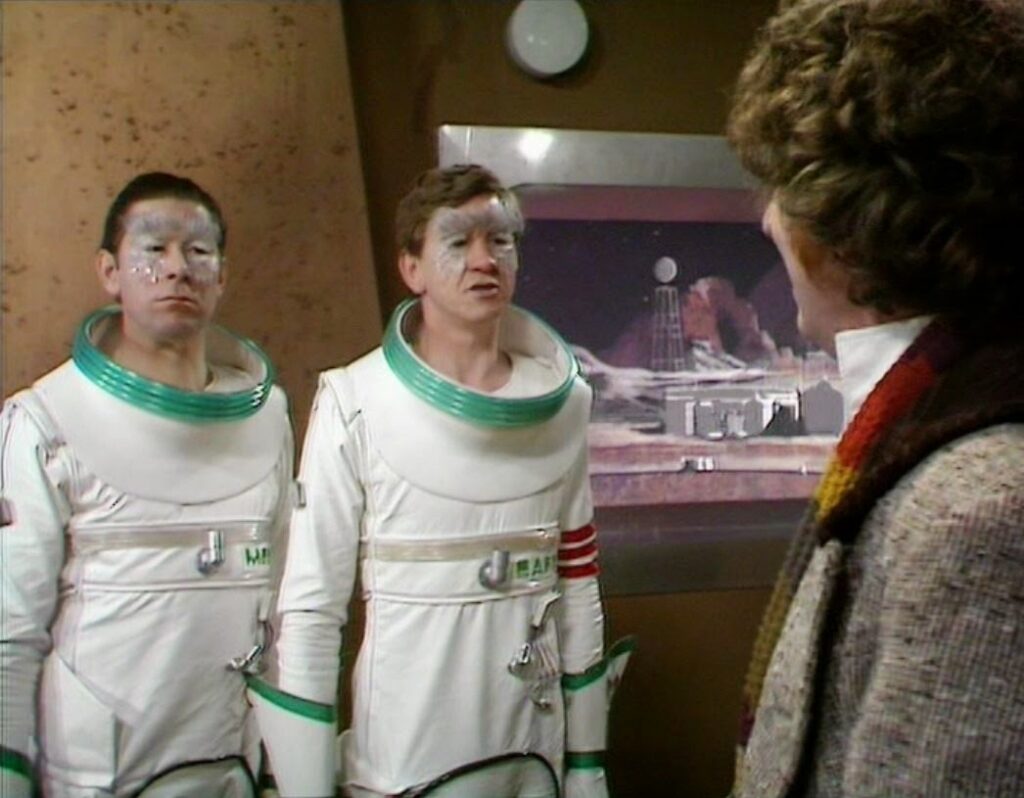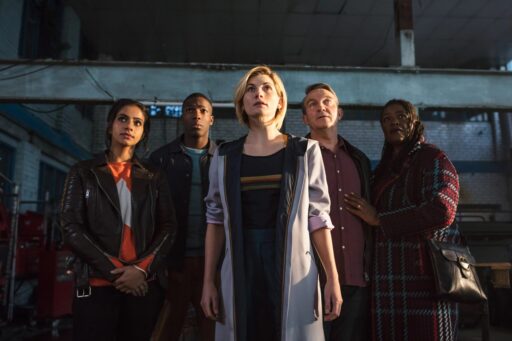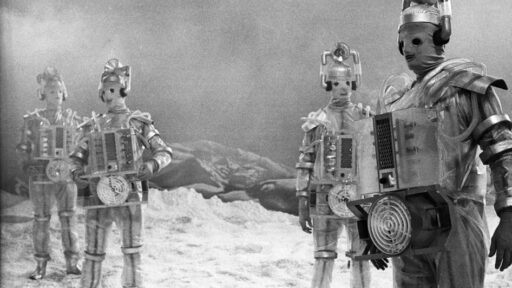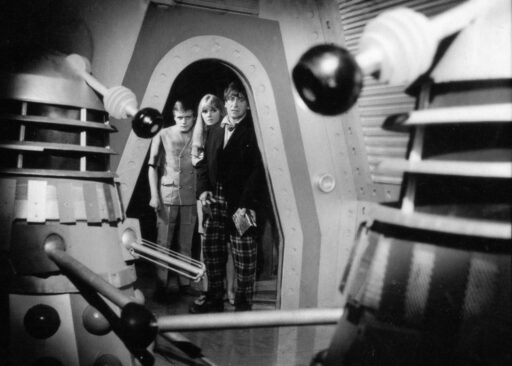Interesting Concepts Undermined By Execution
The Graham Williams era of Doctor Who is often characterized as low budgets, an excess of humor and Tom Baker hamming it up. There is some disagreement amongst fans about whether all of those are actually bad things, but The Invisible Enemy is a pretty strong argument for why they are all a problem.

If you just summarize what the story is about, it really sounds quite interesting. The concept of an intelligent virus that is able to coordinate how it spreads has a lot of potential for a story and even the notion of shrinking someone down to fight it, while far from original, is one that has produced lots of interesting stories over the years.
Unfortunately the story we get from Bob Baker and Dave Martin is in desperate need of a couple more rewrites. The pair are not known for producing subtle or particularly sophisticated stories but they have shown an understanding of Doctor Who’s story structure and how to put something entertaining together. Here though, nothing really lands.
If you think about the science for more than a moment, it’s truly terrible, but that’s fine we can hand wave that easily enough so long as we’re sold on the rest of what’s going on. Unfortunately none of the characters in this story are even given a personality, never mind something like a back story or a motivation. They are walking furniture.
There is some attempt to explore the concept of the virus, but it is at the most surface level and mostly just results in the Doctor insulting Leila for being stupid. Baker is charismatic enough to almost get away with it, but it’s not a great look for the Doctor. The jokey nature of the presentation also undercuts any sense of menace that might otherwise be generated by the infection spreading.
One highlight though is Leela who once again gets to show what she’s capable of, even if the Doctor continually dismisses her. She’s a great example of why it’s not necessary for the Doctor’s companion to be from present day earth.
Then we have the look of the serial. It’s bright, it’s sterile, it’s weirdly cartoony and even the model work seems a notch down from what I expect from Doctor Who. I’m really not sure what aesthetic they were going for here but it looks cheap. The costumes don’t just look silly, they don’t even fit well. The make up to indicate that someone has been infected is just plain weird. And then of course there’s the giant prawn… sorry… Nucleus!
The only thing that really stuck out to me visually in a positive way was the choice to have the spelling of everything be phonetic. I’m not sure why they did it, but it’s a lovely world building touch that’s just there in the background.

The cheapness shows not just in the design but in the production which just has no refinement. Clumsily spoken lines are left in and when they chose to use a shot where Doctor rushes into the TARDIS causing the set to wobble presumably because they didn’t have time or money to re-do it. Doctor Who has always struggled with budget constraints to one degree or another, but previous eras were simply better at working around those constraints.
Of course I can’t finish a review of this story without mentioning K9 since it’s the story that introduces him. I’ve got a soft spot for that robotic dog because he represents some of my earliest memories of Doctor Who and in some regards he has an impressive showing here. But, all the problems are on display too. The difficulty in acting with a character that’s only a few feet tall, the limited mobility, how noisy the unit is. It’s a good example of an idea that really exceeds the available budget.
I can’t help when watching this story but think about what could have been. With a little more money and a script that digs below the surface level jokes, this could really have been something. Instead it’s a historical curiosity at best.
Discover more from Veristopia
Subscribe to get the latest posts sent to your email.








